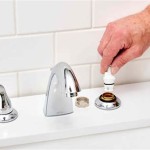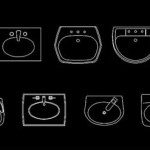What Causes Fruit Flies In A Bathroom?
Fruit flies, tiny insects belonging to the Drosophila genus, are a common household nuisance. While their name suggests an attraction to fruit, their presence in bathrooms can be puzzling. This article explores the various reasons why these pests might infest a bathroom environment.
The primary attractant for fruit flies is fermenting organic matter. While less common than in kitchens, bathrooms can harbor sources of decaying organic material that draw these insects. One common culprit is clogged drains. Hair, soap scum, and other debris accumulate within drains, creating a moist, dark environment ideal for microbial growth. These microbes break down the organic matter, producing the fermentation byproducts that fruit flies find irresistible.
Another potential breeding ground is damp or soiled cleaning tools. Mops, sponges, and rags left damp for extended periods provide a suitable environment for microbial activity and, consequently, fruit fly attraction. Forgotten or infrequently emptied trash cans can also become a source of attraction, especially if they contain organic waste such as used tissues or discarded hygiene products.
Small spills or leaks, often unnoticed or overlooked, can create hidden pockets of moisture and organic decomposition. These can occur under sinks, behind toilets, or within shower stalls. Leaking pipes, while providing a constant source of moisture, also contribute to the growth of mold and mildew, which further attracts fruit flies.
Beyond typical bathroom fixtures and cleaning tools, certain personal care products can surprisingly contribute to fruit fly infestations. Products containing sugary substances, such as shampoos, conditioners, or body washes, can inadvertently provide a food source for the insects if spilled or left in open containers. Even small residues of these products in drains or around sinks can attract fruit flies.
Standing water in infrequently used toilets or sinks can also become a breeding ground. The stagnant water allows for the growth of microorganisms and the decomposition of any organic matter present, creating an attractive environment for fruit flies. Similarly, condensation on windows or tiles, particularly in poorly ventilated bathrooms, can contribute to a humid environment conducive to microbial growth and fruit fly infestation.
Houseplants, although not commonly found in bathrooms, can become a source of attraction if present. Overwatering or poorly drained pots create damp soil conditions that foster microbial activity, attracting fruit flies. Decomposing leaves or other plant debris further contribute to this problem.
Cracks and crevices in bathroom walls or floors can also harbor hidden sources of organic matter. Dust, hair, and other debris can accumulate in these spaces, providing a food source for fruit flies. These hidden locations are often difficult to clean, allowing infestations to persist unnoticed.
Infestations originating elsewhere in the house can also spill over into the bathroom. Fruit flies attracted to overripe fruit or other decaying organic matter in the kitchen or other areas may explore the rest of the house, including the bathroom. If suitable conditions exist within the bathroom, they may establish a new breeding site.
Understanding the various factors contributing to fruit fly infestations in bathrooms is crucial for effective prevention and control. Regular cleaning practices, proper maintenance of plumbing fixtures, and prompt attention to spills and leaks are essential for minimizing the risk of these pests.
Proper ventilation plays a significant role in preventing fruit fly infestations. Adequate ventilation reduces humidity levels, minimizing the growth of mold and mildew and making the environment less conducive to fruit flies. Exhaust fans should be used during and after showers or baths to remove excess moisture from the air.
Regularly inspecting and cleaning drains is crucial for preventing fruit fly breeding sites. Using drain cleaners or a mixture of baking soda and vinegar can help remove organic matter and eliminate potential attractants. Keeping cleaning tools dry and stored properly is also important, as damp mops, sponges, and rags can quickly become infested.
Promptly addressing any leaks or spills is essential to prevent the accumulation of moisture and organic matter. Repairing leaky pipes and wiping up spills immediately eliminates potential breeding grounds for fruit flies. Regularly cleaning and disinfecting surfaces, especially around sinks and toilets, helps remove any residues that might attract these insects.

Got Fruit Flies In Your Bathroom Here S How To Get Rid Of Them Phyxter Home Services
Jab Plumbing Solutions Blog Blocked Drain Plumbers
How To Get Rid Of Gnats Drain Flies Fruit And Fungus

Why Fruit Flies Are In The Bathroom

Got Fruit Flies In Your Bathroom Here S How To Get Rid Of Them Phyxter Home Services

Why Are There Fruit Flies In My Bathroom 4 Possible Reasons House Grail

How To Get Rid Of Fruit Flies In Bathroom Mr Rooter Plumbing

How To Rid Of Drain Flies Forbes Home

Why Are There Fruit Flies In My Bathroom And How Can I Get Rid Of Them

How To Get Rid Of Drain Flies Rt Olson Plumbing







